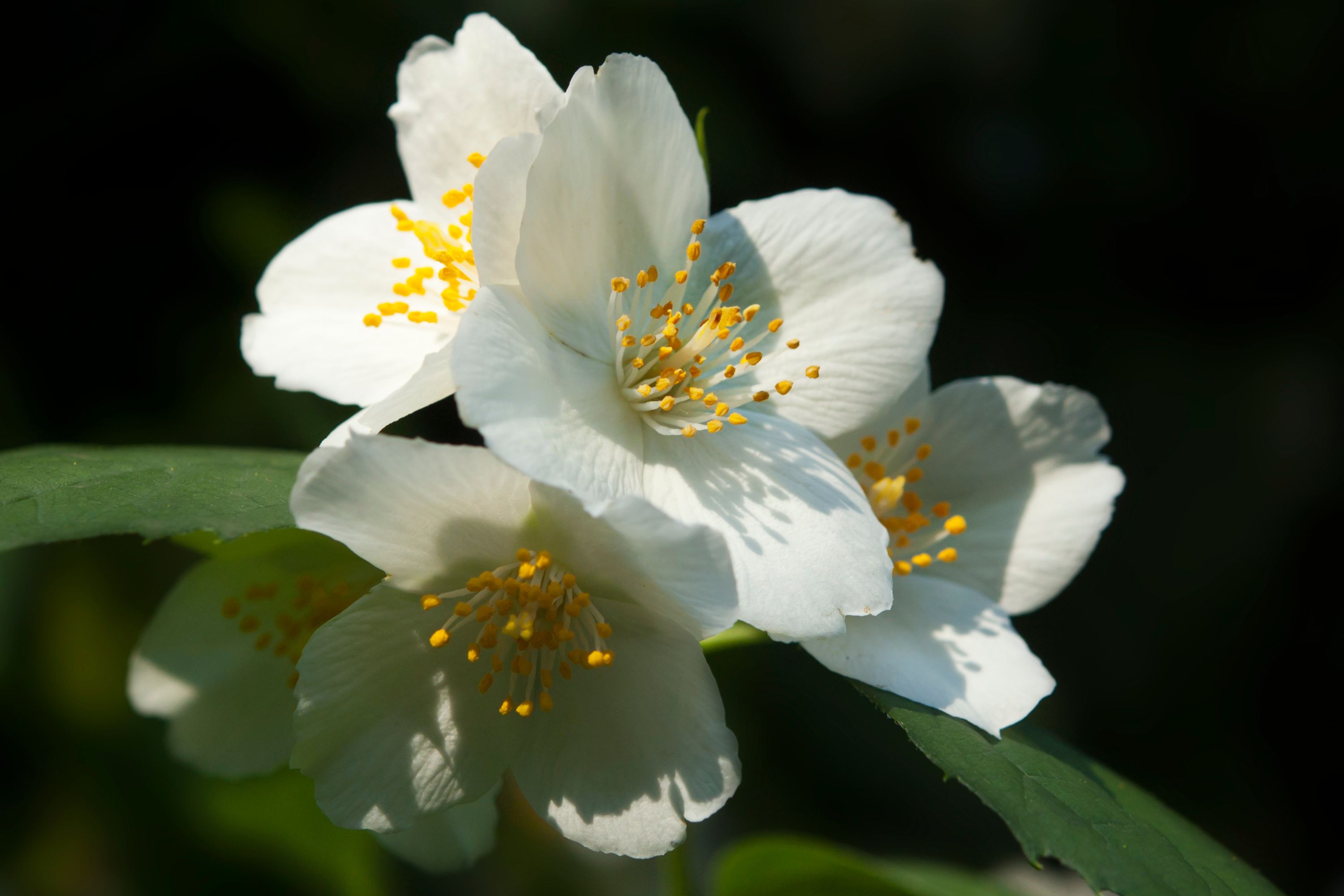Mock orange
(Philadelphus coronarius)

Description
Philadelphus coronarius, commonly known as the Sweet Mock Orange or simply Mock Orange, is a deciduous shrub native to Europe and Asia. It is a popular garden plant because of its fragrant and showy white flowers that bloom in late spring to early summer. In this article, we will explore the various aspects of this plant, including its physical characteristics, growing conditions, propagation methods, and uses. Physical Characteristics: The Philadelphus coronarius is a multi-stemmed shrub that can grow up to 10 feet tall and 6 feet wide. Its leaves are dark green, oval-shaped, and have toothed edges. The leaves grow up to 4 inches long and are arranged opposite each other along the stem. The plant's branches are flexible and arching, giving it a graceful appearance. The Sweet Mock Orange's flowers are its most distinctive feature. They are large, white, and have a pleasant fragrance that resembles the scent of oranges. The flowers grow in clusters of 3 to 6 and are about 2 inches in diameter. They bloom in late spring or early summer and last for about 2 weeks. Growing Conditions: The Philadelphus coronarius is a hardy shrub that can tolerate a wide range of growing conditions. It prefers well-drained soil that is slightly acidic to neutral (pH 5.5 to 7.0) and is rich in organic matter. It can grow in full sun to partial shade, but it blooms best in full sun. This shrub is cold hardy and can survive in USDA zones 4 to 8. It can also tolerate drought conditions once established, but it benefits from regular watering during the growing season. Propagation: The Philadelphus coronarius can be propagated from cuttings or by layering. Softwood cuttings can be taken in the summer, while hardwood cuttings are taken in the fall or winter. The cuttings should be about 4 to 6 inches long and should be taken from the current year's growth. To propagate by layering, a low branch is bent down to the ground and covered with soil. The branch should be wounded or nicked at the point where it comes in contact with the soil to encourage rooting. After a few months, the branch can be cut from the parent plant and transplanted. Uses: The Sweet Mock Orange is a popular garden plant because of its fragrant and showy flowers. It is often used as a specimen plant, as a hedge, or as a screen. Its arching branches and graceful shape make it an attractive addition to any landscape. The flowers of the Philadelphus coronarius are also used in the perfume industry. They are steam distilled to produce an essential oil that is used in the production of soaps, lotions, and perfumes. The oil is said to have a sweet, floral fragrance that is similar to the scent of orange blossoms. In addition to its ornamental and commercial uses, the Sweet Mock Orange has some medicinal properties. The bark of the plant is used in traditional medicine to treat a variety of ailments, including fever, diarrhea, and dysentery. The plant also contains compounds that have antioxidant and anti-inflammatory properties. Conclusion: The Philadelphus coronarius is a beautiful and versatile shrub that has many uses. Its fragrant flowers, graceful shape, and tolerance for a wide range of growing conditions make it a popular choice for gardeners and landscapers. Its essential oil is used in the production of perfumes and cosmetics, and its bark has medicinal properties. Whether you're looking for a specimen plant, a hedge, or a screen, the Sweet Mock Orange is sure to add beauty and fragrance to your landscape.
Taxonomic tree:







